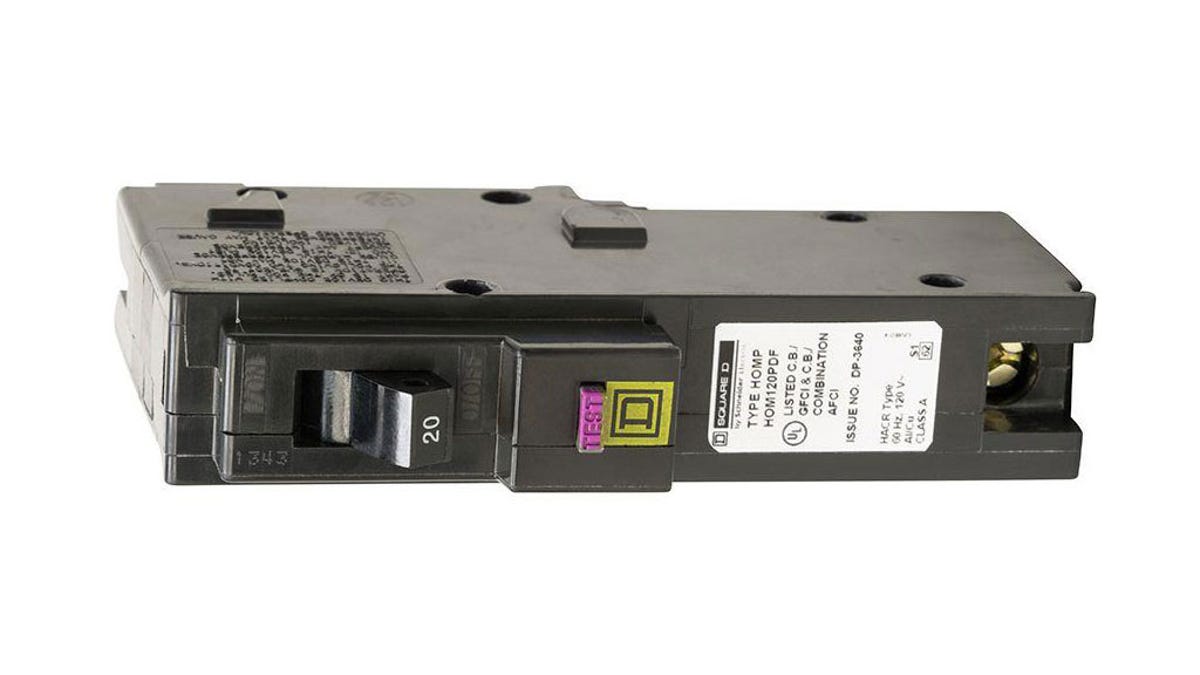Appliance Science: How your circuit breaker protects you from fires
Your circuit breakers are some of the most important but least understood parts of your home's electrical system, keeping you safe from electrical fires. Let's take a look at how they work.

In recent columns, we've discussed surge protectors and UPSes, both of which keep a smooth flow of electricity going to your devices. There's another link in the chain between the power company and your devices, though -- the circuit breaker. This humble device is perhaps more important, but less understood than the others. It fulfills a simple task: if too much current flows through the circuit, it breaks the circuit and disconnects the dangerous flow.
The problem isn't the electricity itself, but what it can do: start a fire. If a cable gets damaged, it can create an arc that can ignite wood or other material. This unrestricted flow of current could be caused by a wrongly-wired plug, a faulty device or your dog chewing through a cable. Anything that makes the circuit the current has to flow through shorter than it should be (hence the term short circuit) or sends it to the wrong place is a problem because it can arc and cause a fire. That's the main difference between circuit breakers and the ground fault circuit interrupter (GFCI) sockets in your kitchen or bathroom: the latter protects you from electrical shock, while the circuit breaker in your basement prevents your house from burning down.
A circuit breaker from Square D that combines a CAFI and GFCI into one breaker.
Somewhere in your house or apartment is a circuit panel that contains your circuit breakers. Each of these breakers is connected to a number of wall sockets or a single appliance. How much current will trigger these breakers depends on the type: most wall sockets will have 15- or 20-amp breakers, while large appliances like dryers may have larger ones. Whatever the capacity, they do the same thing: cut off the circuit if they detect a problem.
Inside is a mechanism called a magnetic breaker. In this, there is a coil of wire that the current passes through. Inside this coil is a small metal pin which can slide forward. When it moves, it pushes on another piece of metal, which is connected to a third piece that is part of the circuit. This is the active part of the breaker: normally, the current flows through it. When the pin moves and pushes the second piece, it moves the third piece and the circuit is broken. The circuit gets broken because a sudden increase in the current passing through the coil makes the pin move. The increased magnetic field created by this current pushes the pin, triggering the circuit breaker.
Around this mechanism are extra parts that balance when the mechanism is triggered, such as a spring that holds back the pin. If the breaker uses a stronger spring, it will take more current to move the pin (and thus the breaker will be rated for a larger current). There is also a latch that makes sure that when the circuit is broken, it stays broken until you flick the switch, which resets the mechanism.
In addition, most circuit breakers will have an additional protection system called a thermal breaker, where two different types of metal are fused together in a metal strip. One of these metals expands as it heats up, causing the strip to bend, breaking the circuit. This is designed to trip the breaker when a fault causes a slower, but still dangerous increase in the flow of current. If the current rises slowly, it won't trip the magnetic breaker, but the thermal breaker will still catch the problem and break the circuit.
Most modern houses will be fitted with a type of breaker called a combination arc fault interrupter (CAFI). In addition to the two types of breaker above, these include a small microprocessor that monitors the current flowing through the breaker. If it detects a problem, it can break the circuit as well. This helps detect problems called parallel arc faults, where the current flows from a frayed or damaged cable into another cable. These problems might not trip the magnetic or thermal breaker, but the smart microprocessor will spot them in a few milliseconds and cut the power.
Most people don't think about circuit breakers, except when they annoyingly trip and cut off the power. That might be frustrating, but consider why it is doing this: it is saving you from a potential fire that could destroy your home. Electrical fires cause nearly half of the household fires in the US, according to the National Fire Protection Association, so a tripped breaker could literally be a life-or-death matter.



